Looking to add some diversity to your garden? Peonies are herbaceous perennials known for their ruffled blooms and delicate palette of colors. They have large and usually fragrant flowers.
Although most varieties have a short blooming period of just around 10 days, peonies can return every spring for a hundred years or more. Talk about resilience! In this guide, we’ll share with you the most popular types of peonies and all the essential tips you need to grow and care for them.
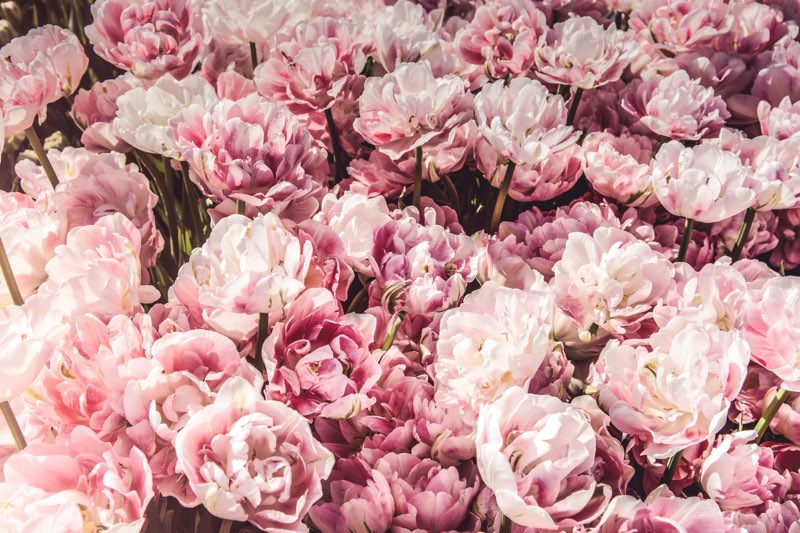
These lovely plants come in many colors, including white, yellow, pink, purple, and red. There’s some debate about the number of peony flower species—a fair estimate would be around 33 species, giving you lots of options to choose from.
Keep reading to learn the meaning of peonies and all you need to know to start growing your own and guard them against common diseases.
Peonies Pronunciation
First, let’s clear up the peony pronunciation dilemma. If you’re going to Google this, you’ll come across a few different answers.
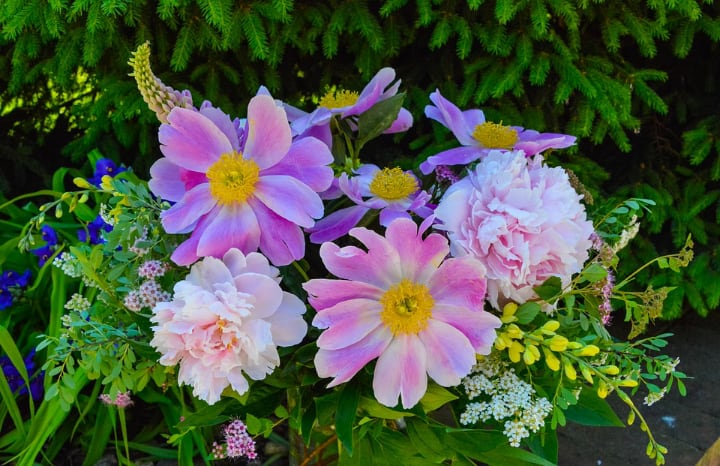
The standard pronunciation is pee-‘uh-nee with the accent on the first syllable. But many people seem to prefer pee-oh’-nee.
At the end of the day, you can choose either. People will know what you’re talking about, right?
The Meaning of Peonies
Like other popular flowers, peonies carry multiple meanings that can differ from region to region. Common peony meanings include wealth, prosperity, success, honor, compassion, romance, bashfulness, and shame.
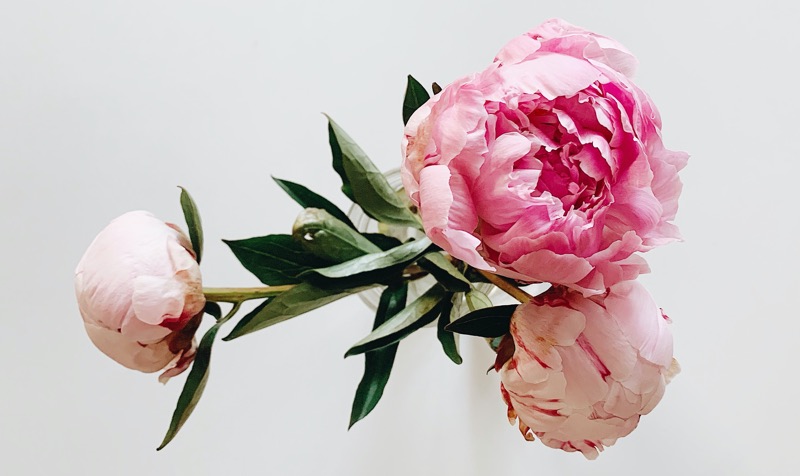
Peonies appear in Greek myths. According to one myth, the flower got its name from Paeon, physician of the gods, who used a peony root to heal Pluto.
Grown jealous of his skill, his teacher Aesculapius tried to kill him. But Pluto saved him by transforming him into a peony flower, which he believed people would praise and admire, as indeed happened.
In another myth, the flower derives its name from Paeonia, a nymph who drew the attention of Apollo, much to Aphrodite’s anger. The nymph turned red with shame, and the goddess transformed her into nothing more nor less than a red peony.
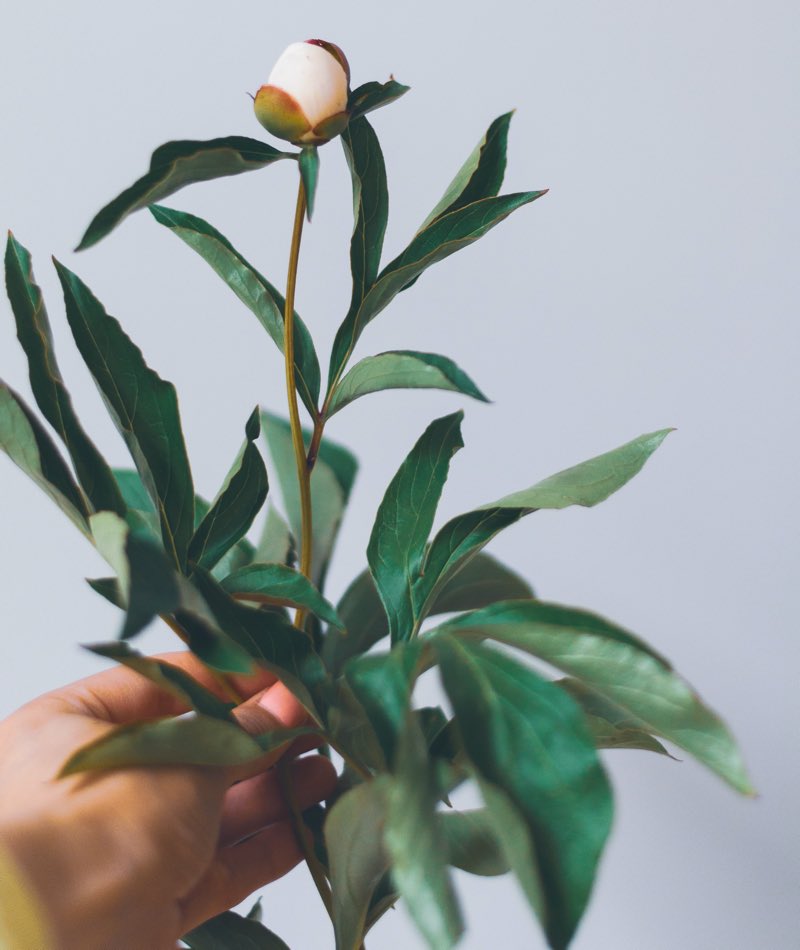
In Asia, the Chinese deeply value the peony and call it “most beautiful” and “the king of flowers.” It was in fact the national flower of China until 1929.
Today, it continues to play an important role in religious traditions and holidays, being closely associated with royalty and honor.
Peony Meaning by Colors
As with many other flowers, the meaning of peonies can vary with the color of the flowers.
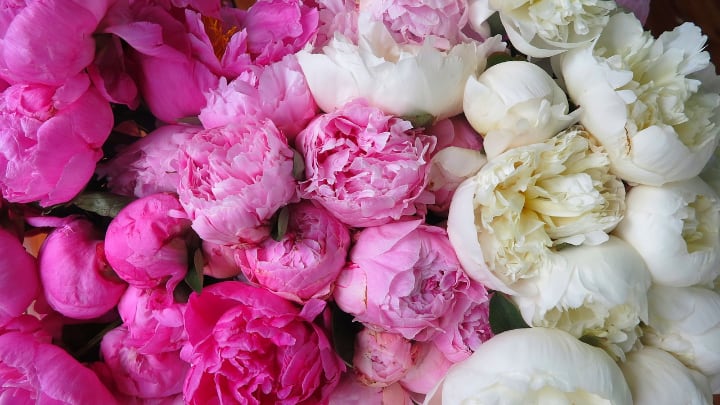
- Pink peonies symbolize romance and love, including passion arising between two strangers. Pink peony bouquets are popular during weddings, as are table arrangements made from this flower.
- White and pale pink peonies symbolize shyness and bashfulness. They are the flowers to give to show that you regret having created an embarrassing situation.
- Red peonies symbolize honor, respect, wealth, and prosperity, especially in Asian countries.
Types of Peonies
Peonies put on a varied display of petals and colors, everything from elegant single-petal arrangements to lavish cultivars that drown you in their color and fragrance.
Most varieties are easy to grow, so you have lots of options to choose from.
Herbaceous Peonies Versus Tree Peonies

Also known as bush peonies, herbaceous peonies die to the ground when the cold sets in. They come back to life in spring. They are sturdy, have long-lasting blooms, and are easy to grow.
Tree peonies have woody stems and lose their foliage in the fall when they stop growing. But the stems remain above the ground and put forth new blooms, usually earlier than herbaceous varieties. Tree varieties are perennials and have large flowers.
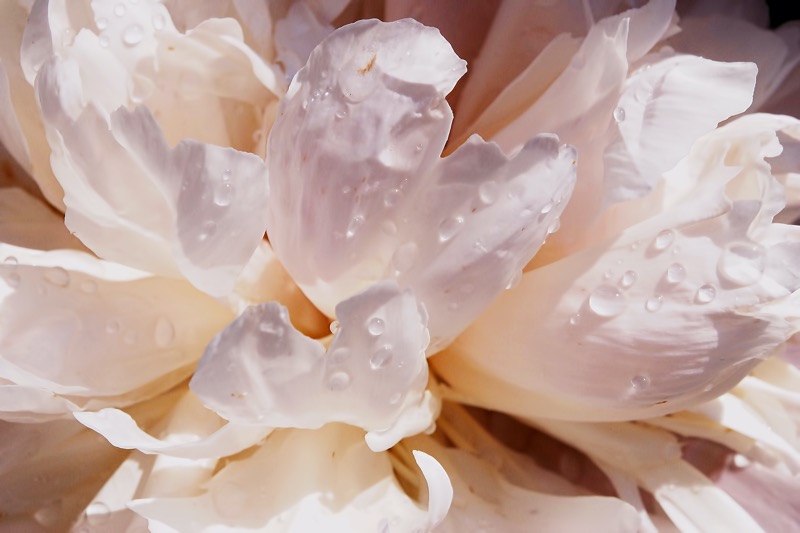
In the late 1940s, Toichi Itoh, a Japanese breeder, hybridized an herbaceous peony with a tree peony to create an intersectional or “Itoh” peony.
Itoh peonies die in winter but preserve a small bushy appearance—they combine the best traits of both herbaceous and tree peonies.
Now that you know the main peony groups, let’s explore some of the most popular types of peonies around.
1. Bowl of Beauty (Paeonia lactiflora)
With its pinkish-purple crown of resilient petals and proud white or yellow stamens, this peony is a striking sight.
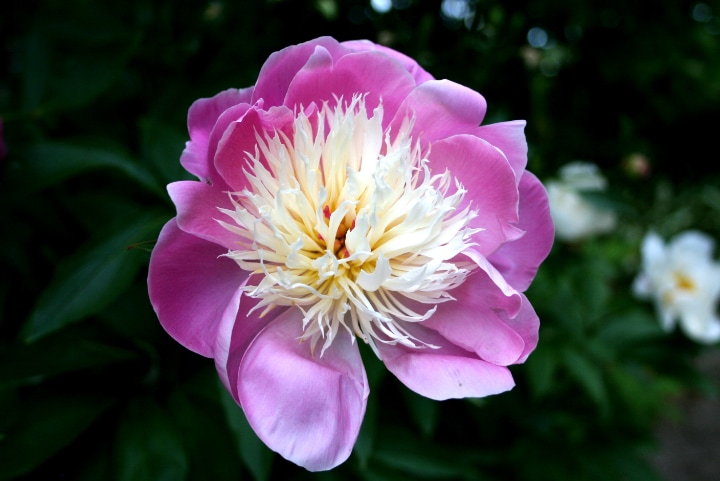
It looks stunning in the garden as well as in both impromptu and carefully arranged bouquets.
2. Reine Hortense Peony (Paeonia lactiflora)
Wearing a color that defies easy categorization, Reine Hortense is an old variety that can add a special touch to your garden.
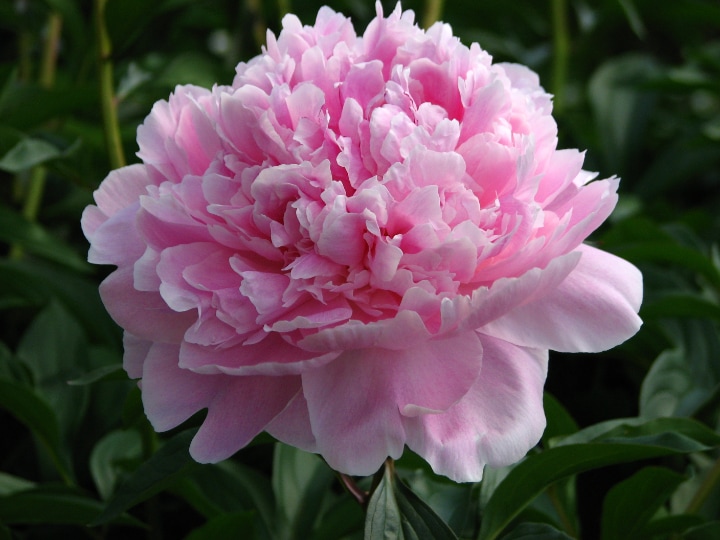
One of the wonderful things about it is how its flowers delicately change color as the plant matures, alternating between white and pink.
3. Cardinal Vaughan Peony (Paeonia suffruticosa)
Reaching up to 7 ft in height over the years, this magenta purple variety is one of the most impressive tree peony flowers you’ll come across.
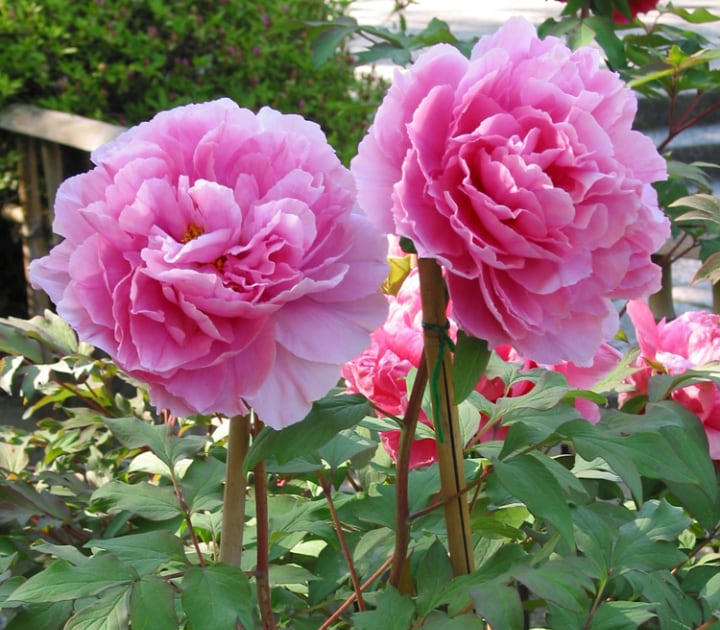
4. Pink Hawaiian Coral Peony (Paeonia lactiflora)
This one may sound exotic, but it’s quite easy to grow, provided that you help support the stems.
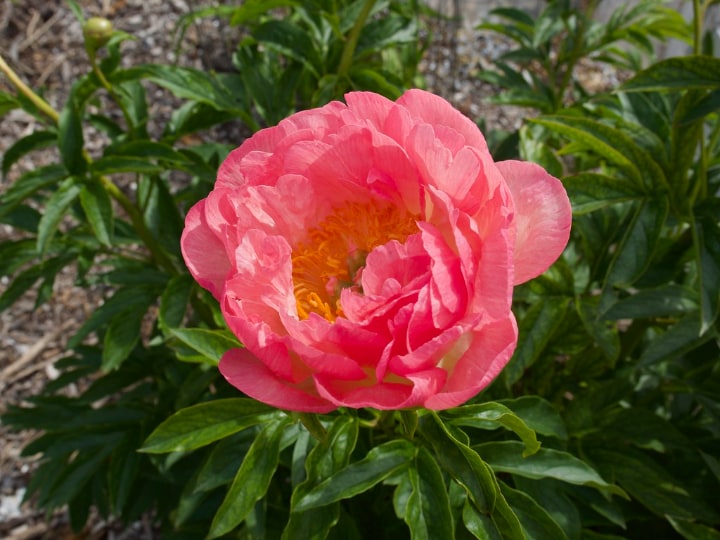
The blossoms can get quite heavy, which makes them susceptible to mud baths after heavy rains.
5. Buckeye Belle Peony (Paeonia officinalis x Paeonia lactiflora)
The “Buckeye Belly” is one of those peonies that can make people stop in their tracks to gape at it.
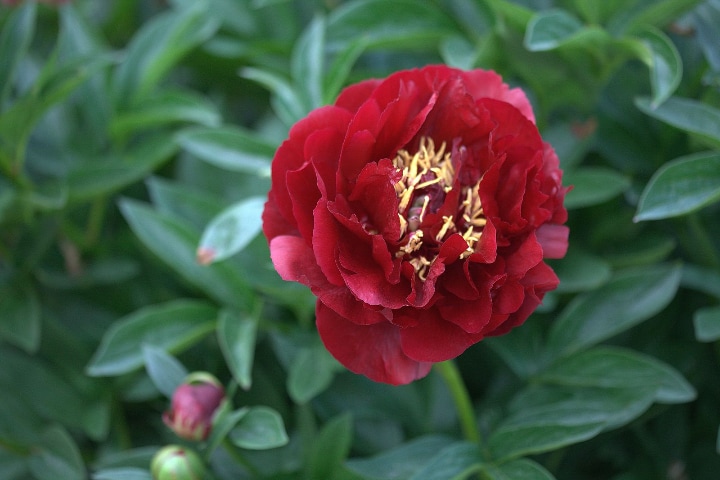
This great border flower has golden anthers that vie for your attention with the deeply colored petals. It looks fabulous in the sun.
6. Prairie Charm Peony (Paeonia Intersectional hybrid)
Known for its buttery yellow blossoms, this lightly-fragrant peony can reach 30” in height. This variety is an intersectional or Itoh hybrid.
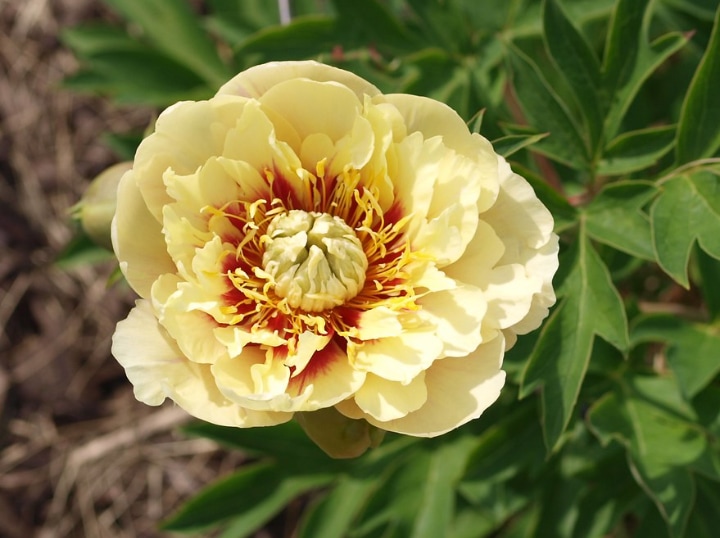
7. First Arrival Peony (Paeonia Intersectional hybrid)
Another successful hybrid, this one makes an early appearance in your spring garden, setting off a show of delightful pink blooms that can last for four weeks.
Tip: It’s best planted in nutritious soil, with the other plants at a respectful distance.
8. Charlie’s White Peony (Paeonia lactiflora)
This variety has luxurious ivory blooms arranged in a classical peony style. It’s mildly fragrant and has an inner core with a beautiful crinkled texture.
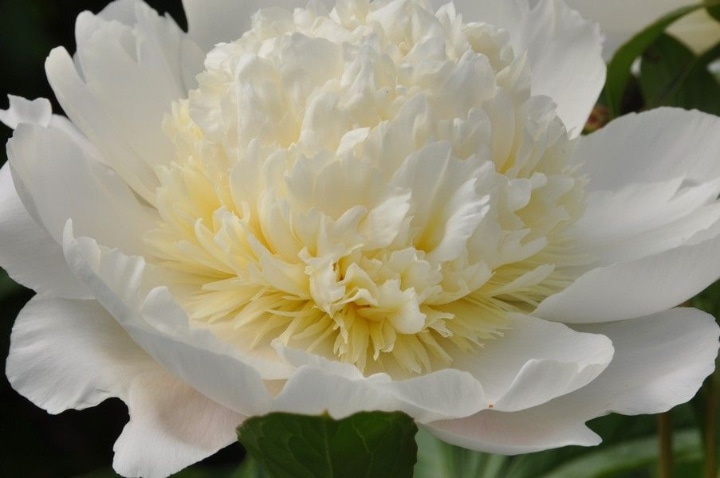
9. Raspberry Sundae Peony (Paeonia lactiflora)
As delicious as its name, this Chinese variety delivers a pink bomb that’s bound to attract attention. As to its fragrance, well, we’ll let you discover it for yourself.
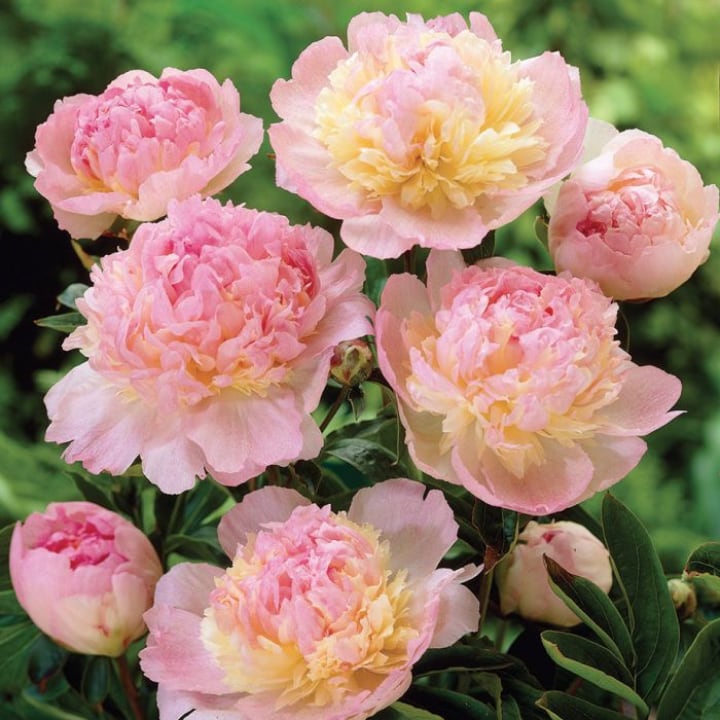
10. Karl Rosenfield Peony (Paeonia lactiflora)
A century-old cultivar, this type of peony proudly wears double red blooms and has a wonderful fragrance to boot.
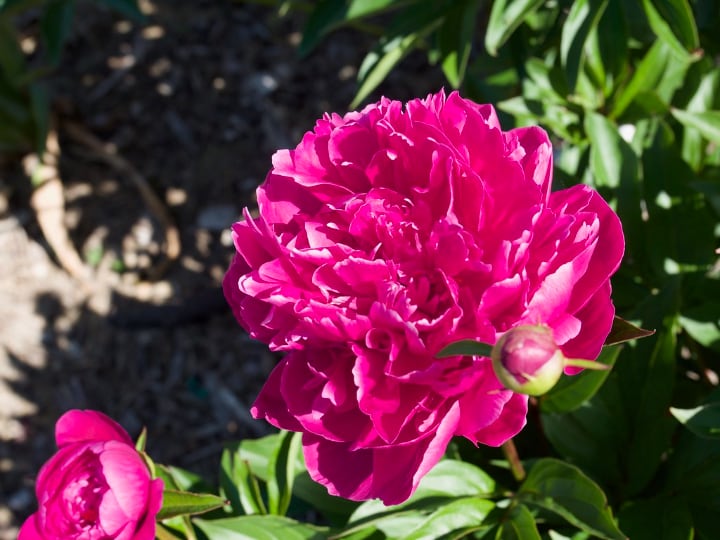
11. Krinkled White Peony (Paeonia lactiflora)
Living in a warm region? Krinkled White could be an elegant addition to your garden.
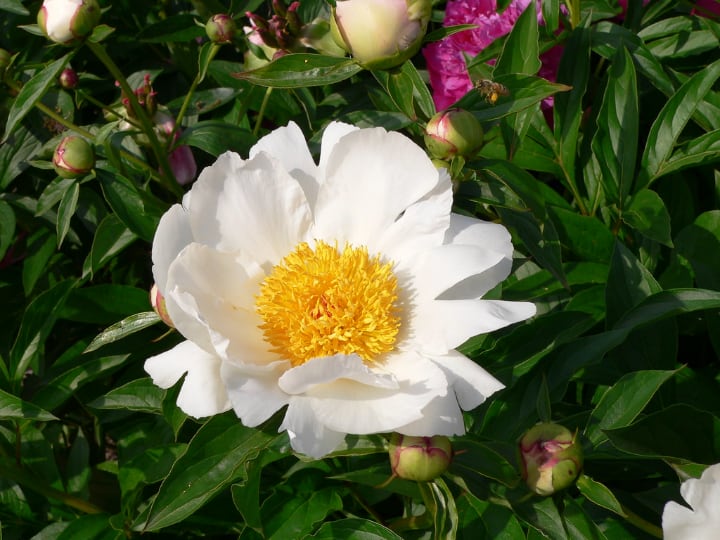
Its large, white flowers create a striking contrast with the yellow core, making it a great decorative plant.
12. Jean Ericksen Peony (Paeonia lactiflora)
A midseason peony, “Jean Ericksen” is a magnet for hummingbirds. Choose it for its deep red petals and prolific blooms.
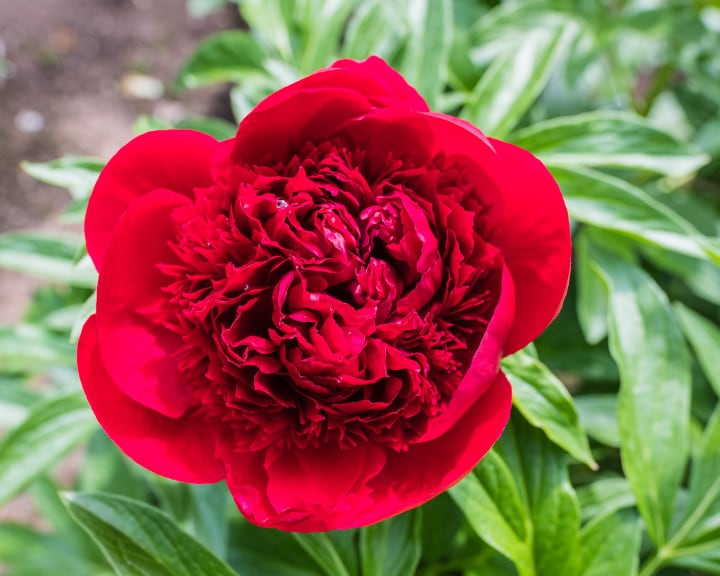
13. Bartzella Peony (Paeonia Intersectional hybrid)
Lemony in color, the “Bartzella” is a fast-growing Itoh peony bush that can produce more than 20 flowers per bloom.
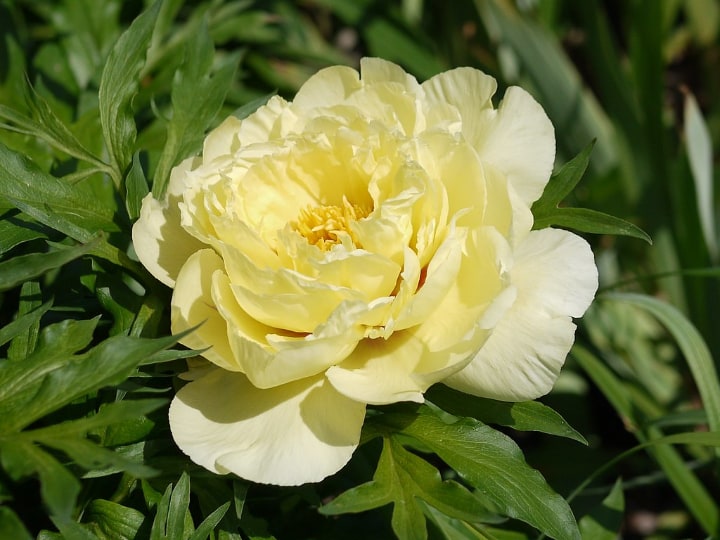
Like most other varieties, it’s easy to look after and doesn’t have any special demands.
14. Miss America Peony (Paeonia lactiflora)
A profuse bloomer, Miss America puts on a graceful show of pure white petals. This variety is resistant to cold, making it an inspired choice if you live in a cooler region.
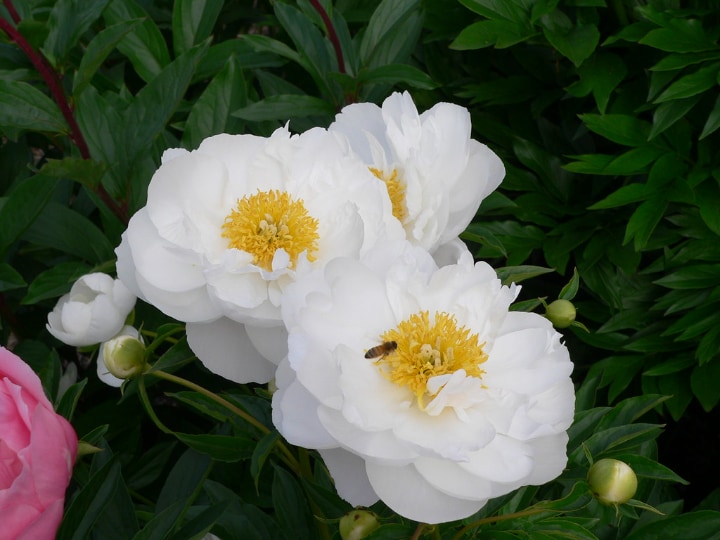
15. Fairy Princess Peony (Paeonia lactiflora)
“Fairy Princess” grows only to 20” in height, but its satin red petals and yellow flares make it a perfect border plant.
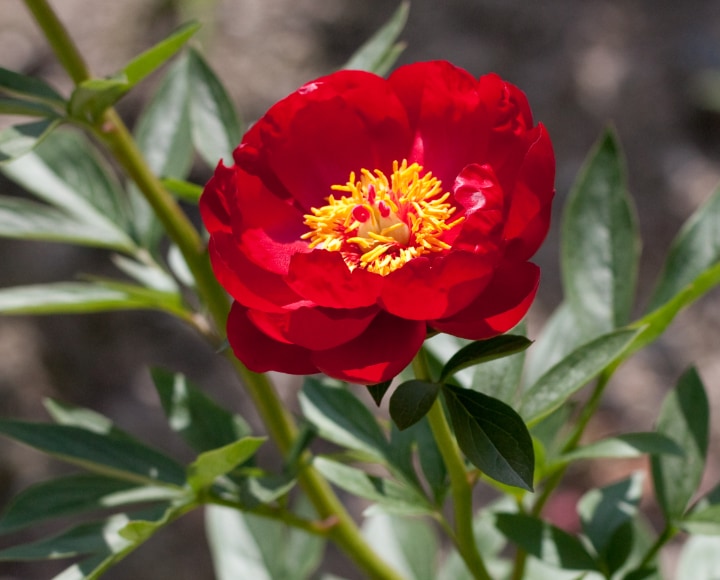
Tip: It loves loamy soil, though you can plant it in other types of soil too.
16. Sweet Marjorie Peony (Paeonia lactiflora)
With its dazzling array of petals and rich dark pinks, Sweet Marjorie is a striking variety that can claim the center stage in any garden arrangement.
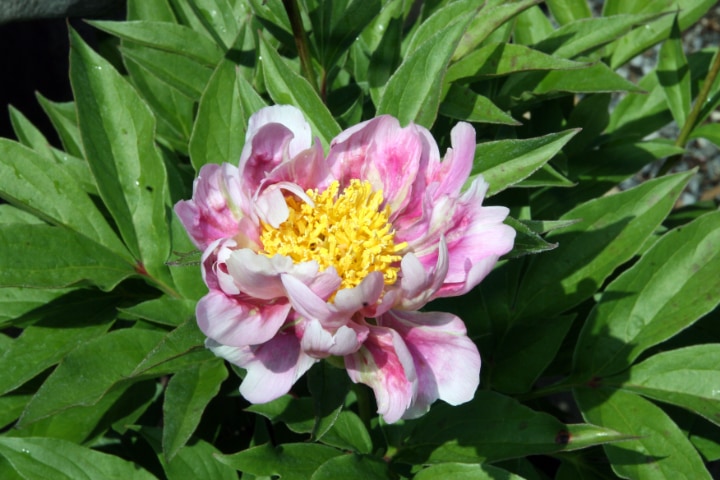
Peonies Planting and Care Tips
Peonies are some of the longest-living garden plants—provided that they are put in the right spot from the start and not moved around later.
The best time to plant a peony—whether we’re talking about bare roots or potted plants—is in the fall. Ideally, you want to get to work about a month and a half before the ground freezes.
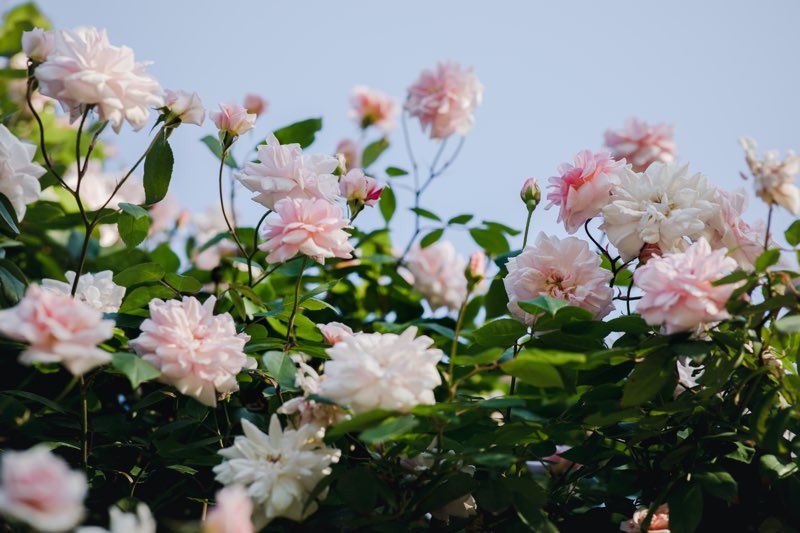
Keep an area of 4’ in diameter clear around the plant to give it enough space to grow and develop. These flowers don’t like to be too close to other shrubs or plants.
Also important is to plant the roots close to the surface of the soil—no deeper than 3”! This ensures that they get the winter chill they need to return in spring.
Soil
Peonies thrive in slightly acidic soil. You may want to amend the soil with compost or another soil mix.
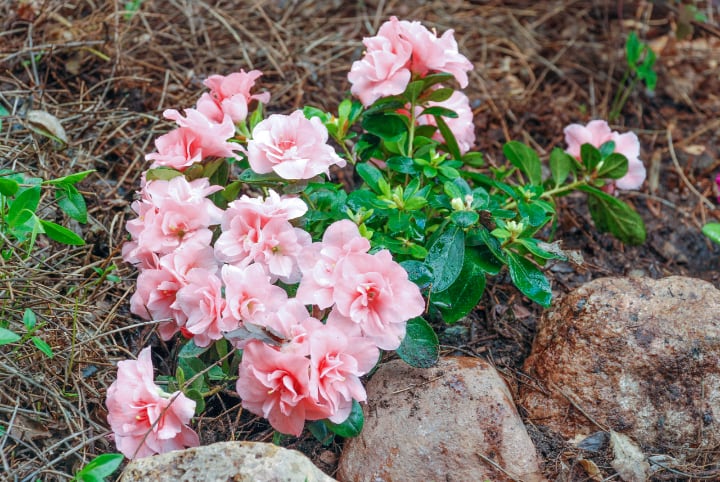
While they are not necessarily pretentious, they like to grow in the same spot for many years.
That’s why it’s worth taking the trouble to prepare the soil for them. Ideally, you want to aim for a pH between 6.5 and 7.
Light
These flowers need lots of sun—at least 6 hours a day—to bloom and stay healthy. Peonies may still grow without that much sun, but they will produce fewer blooms and be more susceptible to fungal diseases.
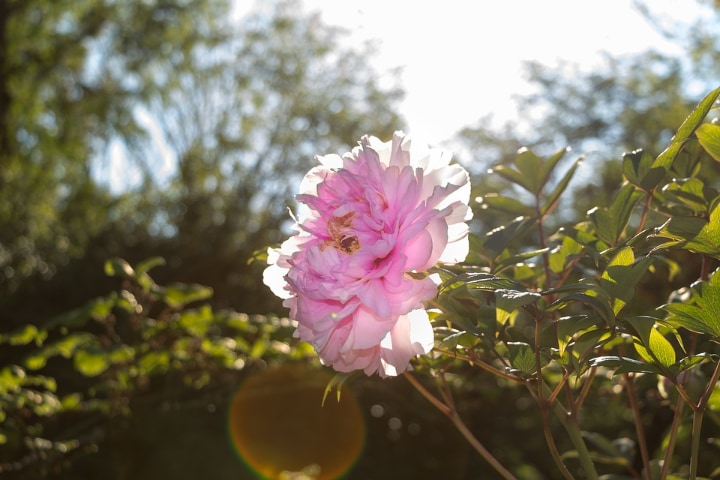
Important: Peonies are not flowers that you should keep in the shade!
Temperature
Most types of peonies can withstand winter colds up to around -40°F, but they don’t take drought all that well. If you live in a temperate region, you don’t have much to worry about.
Even so, if you want to plant them in the garden, check the hardiness of the variety you choose. Some cultivars and hybrids are more sensitive to temperature variations.
Watering
Give your peonies around 1-2” of water every week and add some mulch to keep the soil moist. But ensure good drainage too—your peonies need it to survive rainy spells.
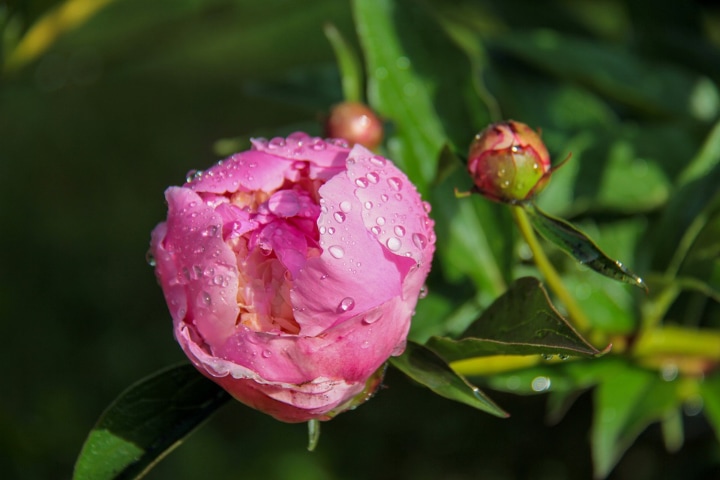
Tip: Continue watering during the summer after the flowers wilt to keep the foliage healthy.
Fertilizer
Mix a low-nitrogen fertilizer with compost and apply it to the base of the plant every year. You can use a tulip fertilizer with confidence—your peonies will love it.
Tip: Usually, the best time to fertilize a peony is after it has finished blooming. But be careful not to overdo it.
Growing Peonies in Pots
Peonies can grow indoors in pots without much fuss. However, because of their large root system, they require a big pot that is at least 12” in diameter and very deep.
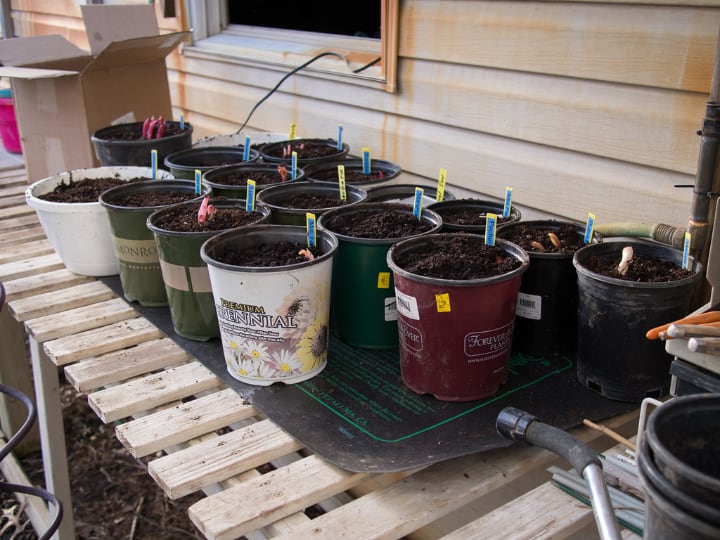
Good drainage makes a big difference, so make a few extra holes in the bottom of the pot if you have any doubts.
Important: Avoid peat-based composts—use a soil-based compost. Or use two-thirds topsoil mixed with one-third perlite.
Place the pot where it gets at least 3-4 hours of sunlight every day.
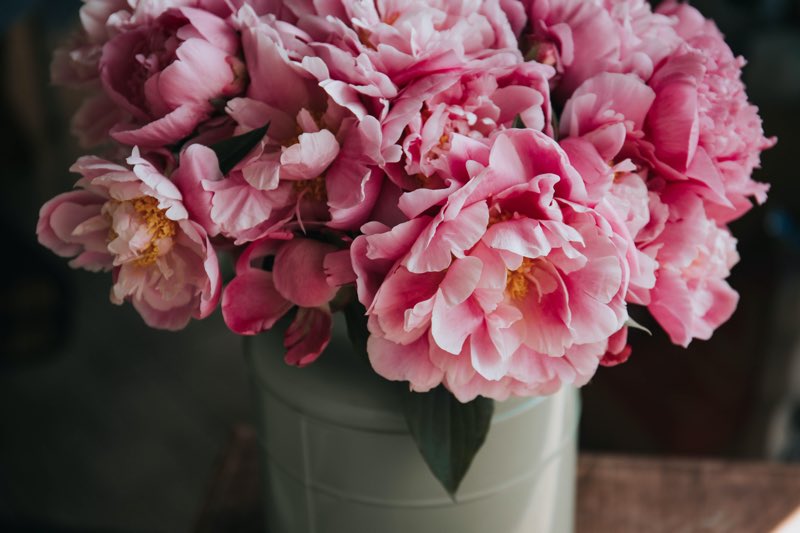
Water once a week and fertilize in early spring before the plant unfurls its leaves. In winter, protect the pot from freezing but ensure it experiences cool temperatures so the plant will bloom again.
Tip: Let the plant mature for at least 3-4 years before repotting by dividing the bare roots.
When growing peonies in pots, keep in mind that tree varieties grow taller than herbaceous ones and need more space.
Growing Peonies from Seed
Can you grow peonies from seed? You bet! But you have to pay attention to a few things to get it right.
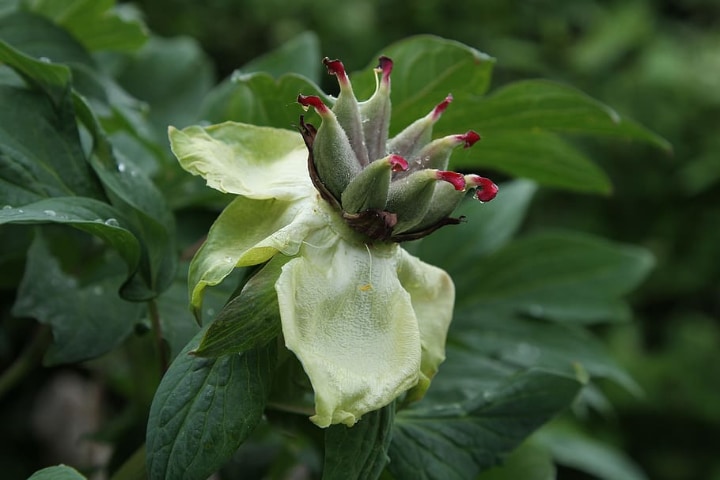
- First, you want to leave the seed pods to ripen on the plant. They will eventually harden and open—that’s when you should collect them—not sooner!
- Outdoors, plant them in early fall in a nursery bed where they are safe from incautious footsteps and overcurious dogs.
- Indoors, plant them in small, 4-6” pots filled with potting mix.
- Plant the seeds about 3” apart and 2” deep. Wrap the pots in plastic bags that you use for storing food and keep them in a warm place for about 3 months.
- During this period, carefully check the soil and replace it if needed without disturbing the seedlings.
- When the roots are sufficiently developed, move the pots in a cold spot just above freezing until spring.
- Here’s perhaps the hardest part—you need to have patience. Most peonies planted from seed take around 3 years to bloom.
Common Peony Diseases
Peonies are quite hardy as far as garden plants go, but they are susceptible to certain diseases. Whether you grow them outside or inside, keep an eye on your flowers for the early signs of disease and act fast.
Gray Mold
Gray Mold causes rot in young shoots and occurs most often in damp, rainy seasons. It affects both stems and leaves. The rotted area tends to become covered by fungal spores, hence the name of the disease.
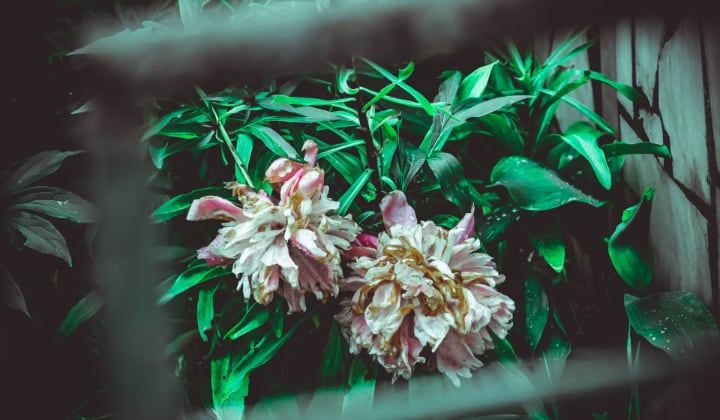
The best way to deal with gray mold is to prevent it in the first place by cutting stalks and leaves to ground level in the fall and burying the debris in the mulch.
After the fact, improve soil drainage and consider moving the plants to a better spot.
Red Spots
Small, red, or purple peony blotches may occur in spring. Usually, this disease needs to occur repeatedly to kill the plant.
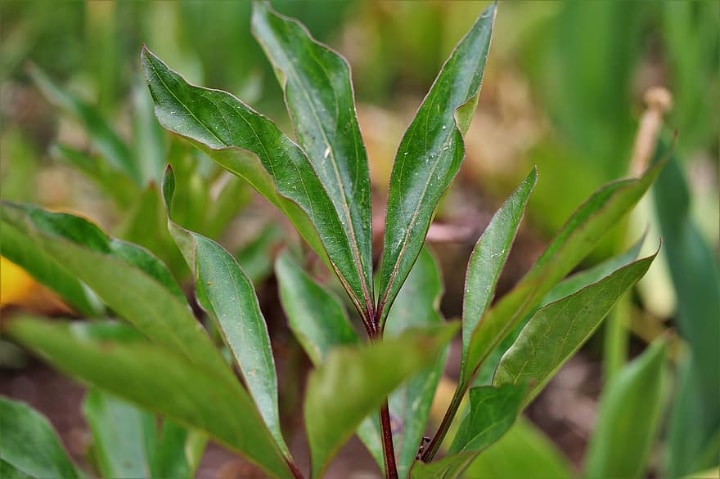
The best way to deal with it is to cut the stems at ground level and apply fungicides to the part of the plant that’s left. Improving air circulation can also help. Learn more about it here.
Powdery Mildew
This fungal disease causes a white powder on the surface of the leaves and flowers. It doesn’t kill the plant, but it is unsightly.
To deal with it, mix canola oil with bleach-free liquid dish soap and baking soda (a tablespoon each). Add to the mix a gallon of water. Then spray every two weeks during the summer.
Peonies for Sale—Tips When Buying
Thinking of buying peonies? There are a couple of things you need to pay attention to.
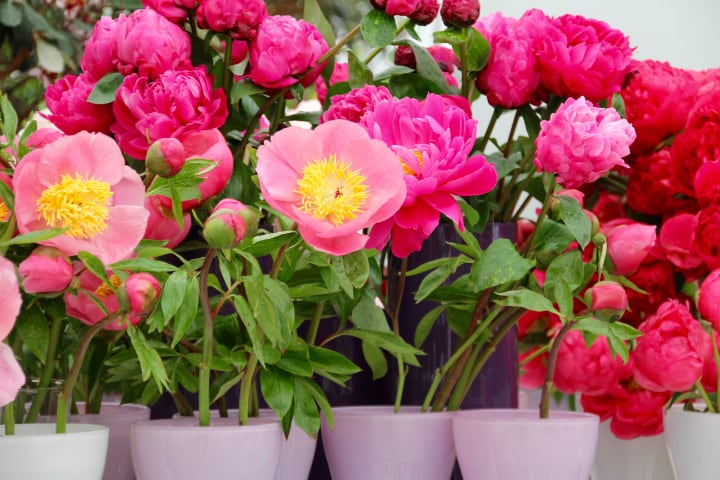
- If you buy potted plants, choose flowers with strong stems. Avoid plants with leaf spots.
- Buy peonies in late April through June when they are in season to get the best price possible. Remember that peonies are not available all-year-round!
- If you want to grow well-established flowers in your garden, consider transplanting a mature bush over planting bulbs—it’s faster and you’ll get more blooms.
- Itoh peonies tend to be more expensive. But if you want to keep your garden green with foliage during the winter, they are worth the extra bucks.
- Buy natural cutting Itoh peonies—they are healthier and are easier to grow. If you’re buying online, ask the seller to confirm that you’re buying the real deal.
Peonies Frequently Asked Questions
Now let’s take a look at some of the most common questions that gardeners tend to ask about peonies.
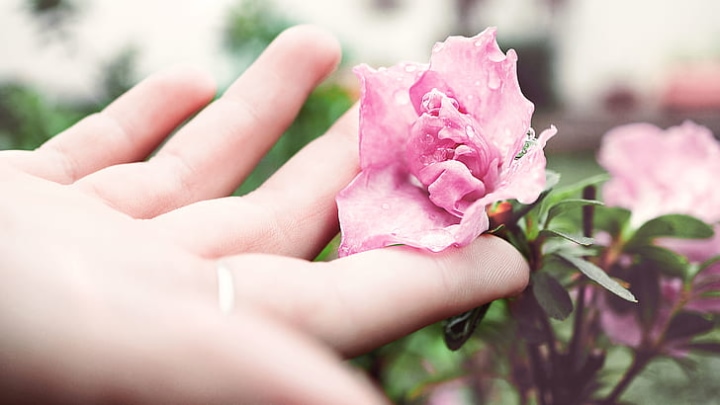
When is the season for peonies?
Peonies bloom from April up until June—that’s the season for peonies and the best time to buy them. Different cultivars bloom at different times, so consider filling your garden with early, middle, and late bloomers.
Where do peonies grow best?
Garden peonies bloom best in a sunny spot sheltered from the wind that gets at least 6 hours of sunlight every day. Potted peonies also require at least a few hours of sun daily.
Do peonies die back in winter?
The leaves and stems of herbaceous and Itoh peonies die back before they go dormant in winter. Peony trees also shed their leaves but keep their bare stems until spring.
How do you care for peonies?
Water weekly with an inch of water during the summer. In the fall, cut back the leaves and stems of herbaceous peonies and the leaves of tree peonies. Ensure good drainage, fertilize with moderation during the growing season, and use a good all-round fungicide. Read more about peony flower care.
Pee-‘uh-nee or Pee-oh’-nee?
Whether you call them one way or the other, peonies can be a cheerful, inexpensive, and stress-free addition to your garden.
A bouquet of peonies will last about 5 days in a vase, but a peony in your garden can come back to life every year for 100 years or more. That’s the wonder and the beauty of growing your own peonies.
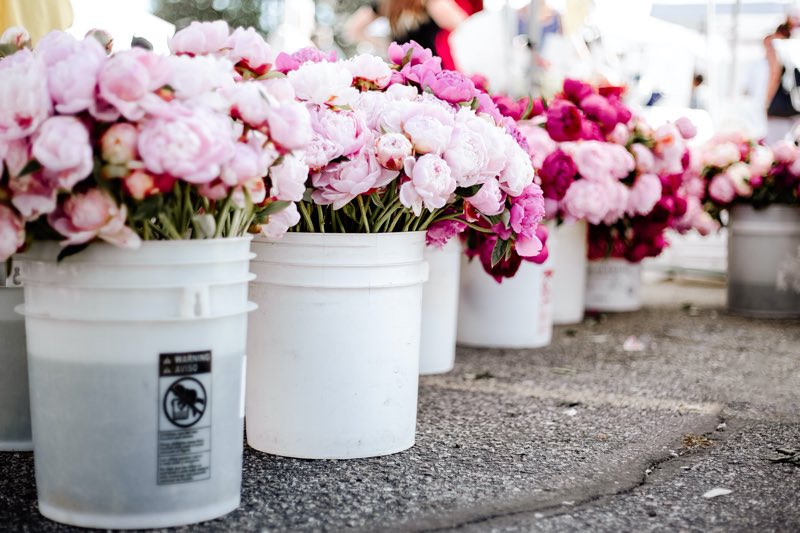
With so many great varieties to choose from, it’s hard to say no to this garden darling. Add to that the fact that peonies are easy to look after, and you have no reason not to plant them.
If you enjoyed this guide, why don’t you share it with your friends? We think peonies deserve a bit more gardening attention than they usually get. Don’t you agree?

Leave a Reply